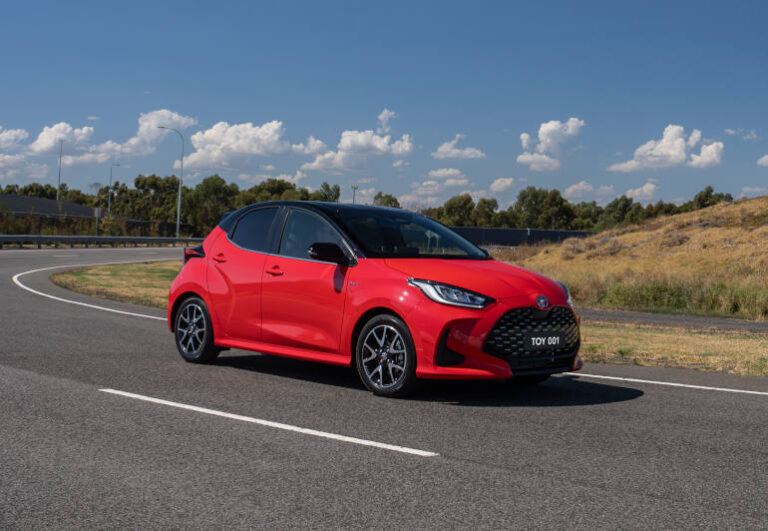Toyota has refreshed its Yaris hatchback and Yaris Cross small SUV for 2025, bringing a suite of advanced safety technologies and small but important environmental upgrades across the entire range. For fleet buyers, especially those managing vehicles with a single occupant or light urban use, the updates reinforce these models as smart, responsible, and practical choices.
Safety Now Standard Across the Board
One of the most notable changes for 2025 is that Toyota has made its latest-generation safety systems standard across all grades of both Yaris and Yaris Cross. This includes features like:
- Parking Support Brake – now available on entry-level Ascent Sport (Yaris) and GX (Yaris Cross) models, helping reduce the chance of reversing collisions.
- Blind Spot Monitor with Safe Exit Assist – now standard on Yaris Cross GX.
- Acoustic Vehicle Alert System – fitted to all hybrid variants, alerting pedestrians when the vehicle is moving quietly in EV mode.
These enhancements mean even the base-spec vehicles come equipped with advanced safety features – a major plus for fleet managers looking to protect drivers without having to pay for premium trim levels.
Sean Hanley, Toyota Australia’s Vice President of Sales, Marketing and Franchise Operations, said the changes demonstrate Toyota’s ongoing commitment to continuous improvement.
“While the changes are incremental, every new technology contributes to the safety of all road users,” Hanley said.
Small Steps Toward Big Sustainability Goals
In a move that may go unnoticed by most consumers but matters to environmentally-conscious fleets, all grades of both vehicles now use R1234yf refrigerant for their air conditioning systems. This new gas has a significantly lower global warming potential than older refrigerants, contributing to lower overall vehicle emissions – a subtle but meaningful change for organisations tracking Scope 1 and 2 emissions.
The Yaris hatch, which now comes exclusively with Toyota’s 85kW 1.5-litre hybrid powertrain, also includes an acoustic alert system and gains comfort features like larger alloy wheels on mid-spec grades.
Meanwhile, the Yaris Cross continues to be available in both 2WD and AWD, using the same hybrid engine as the hatch but with an additional rear electric motor in AWD models for extra grip in slippery conditions. The combined outputs remain at 85kW, balancing power and fuel efficiency in a package ideal for city deliveries or mobile service operators.
Pricing and Grades – Keeping It Competitive
Here’s how the 2025 pricing stacks up for both models (RRP, excluding on-road costs):
Yaris Hatch (Hybrid only):
- Ascent Sport – $28,990
- SX – $32,390
- ZR – $34,590
- Premium paint – $575
- Two-tone paint (ZR only) – $1,350
Yaris Cross (Hybrid only):
- GX 2WD – $31,790
- GXL 2WD – $33,990
- Urban 2WD – $36,930
- GR Sport 2WD – $36,990
- GX AWD – $34,790
- GXL AWD – $36,990
- Urban AWD – $39,930
- Premium paint – $575
- Two-tone paint (Urban & GR Sport) – $1,350
These prices put both models within reach for fleets seeking low-emission city runabouts with a full suite of safety tech and minimal compromise on comfort. The Yaris hatch, in particular, remains a strong choice for fleets with solo drivers, such as inspectors, assessors, or meter readers.
Final Word for Fleet Buyers
With emissions regulations tightening and NVES (New Vehicle Efficiency Standard) targets looming, every bit of efficiency and safety counts. Toyota’s decision to switch to a greener refrigerant, make safety standard across all grades, and stick with hybrid-only powertrains in these models is well aligned with fleet needs.
For salary packaging or novated lease customers, the Yaris and Yaris Cross also offer the appeal of Toyota’s trusted hybrid tech and low running costs.
These are vehicles designed with the everyday user in mind – and with these latest updates, they’re more suitable than ever for modern fleet requirements.






